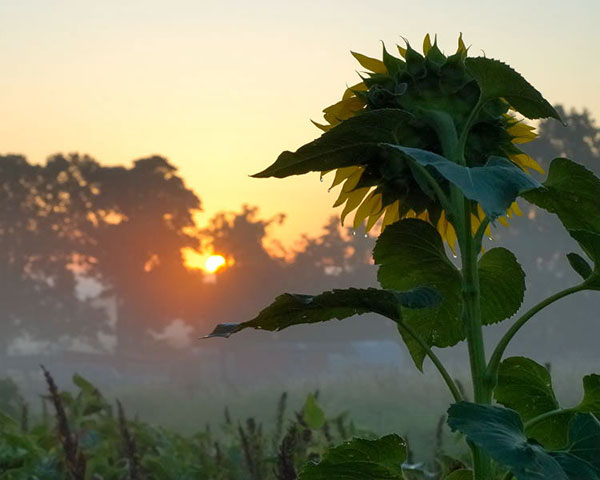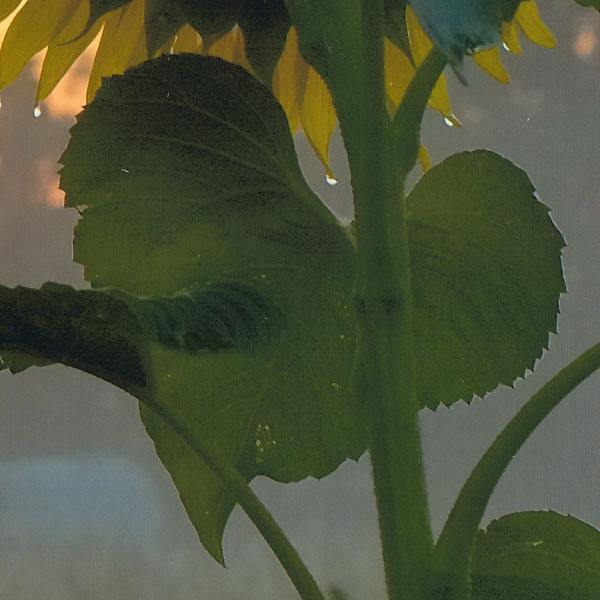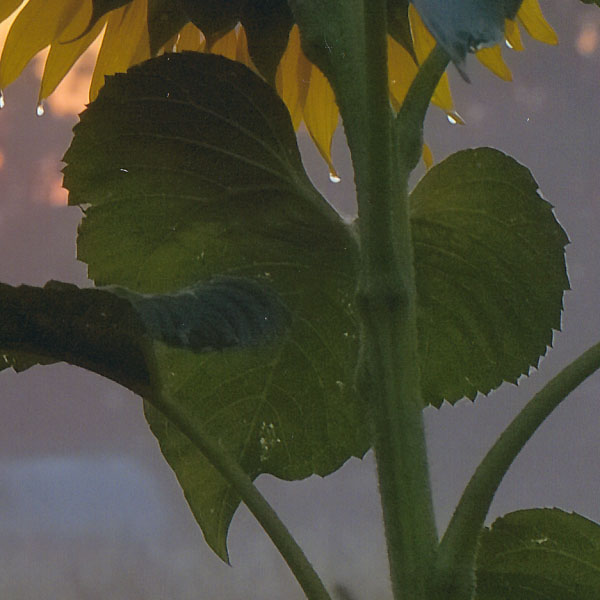The Epson SPR1800 vs. SPR2400
Abstract
When it came time to get a new wide-carriage printer,
I suffered from a plague of choices. It was definitely going
to be an Epson printer with the new Ultrachrome
inkset,
but I wasn't sure which one I should get. I decided upon
an R2400, and here's why.
First, the Good News
Both printers give astounding results. For 90% of my photos,
either one is great. In fact, the R1800 holds a slight edge
because of the gloss optimizer, which is a type of "varnish."
However, there's always one skunk at the picnic. In my case, it involves
a photo I took of a sunflower, pointed at the dawn. It has
a lot of natural colors, like muted greens. These seem to
give the R800/R1800 inkset fits.
Next, the Bad News
First, let me introduce the skunk:

Das Skunk (Original Image Saved as a JPEG) As you can see, the foreground is dark, almost a silhouette, but not
quite. There's quite a bit of detail in those leaves. It's
a great deal more apparent in prints than this rather poor
image, prepared for Web display. Here is the thing you need
to look at:

Detail of the Leaf from the Original Image File I want to note that most of these images were made from a flatbed scan
of a print, so there will be some variance in color and
quality.
When I first printed this on an R800, the leaves looked like crap. I
couldn't figure out why. I thought that the printer profile
may have been out of date, so I reprofiled the printer (I
run a completely calibrated system, with custom profiles
of all my devices). The leaves came out murky and muddy.
I'll show you how it looks below. In the case of this one
image, the result is immediately apparent, and pretty extreme.
You don't need to carefully examine the image in a calibrated
viewing booth. It looks like crap in any light.

R1800 Scanned Print: Note the Smeared and "Peppery" Appearance
of the Leaf Okay, maybe the printer was bad. Except that it makes beautiful prints
of all my other images. It just screws up on this one picture.
If you look at the image above, you can see that the underside
of the big leaf seems "smeared," and the shadows have a
"peppery" texture.
I then tried the R1800. Still crap. The R1800 uses exactly the same
inkset as the R800.
Okay, maybe the profile was bad. I recalibrate the R1800. No dice. Exact
same results.
I should mention here that the color is dead-on. The problem is not
with color. The problem is with detail. Don't let the lousy
flatbed scan fool you. The R1800 gives a very, very good
color rendition.
Good News Again
At about this time, we got our sample R2400, so I decided to give it
a go with this picture. I set up the printer and calibrated
it. I then printed the sunflower on that printer. Notice
the leaf now:

R2400 Scanned Print: That's More Like it I'm not sure if it's the ink or the printer driver/firmware, but the
print finally came out right.
Conclusion
After all this, and after printing a couple of black-and-white
images on the R2400, I was convinced. The R2400 doesn't
have the "bronzing" problem that plagues the 2200. The R1800
does much glossier glossies. They look VERY good, but that
leaf...
I am now the proud owner (actually, my wife is the principal user of
the printer) of an Epson R2400. I think that leaf was worth
the extra $300 (actually more, the K3 inks are more expensive,
but not by much.)
| 












